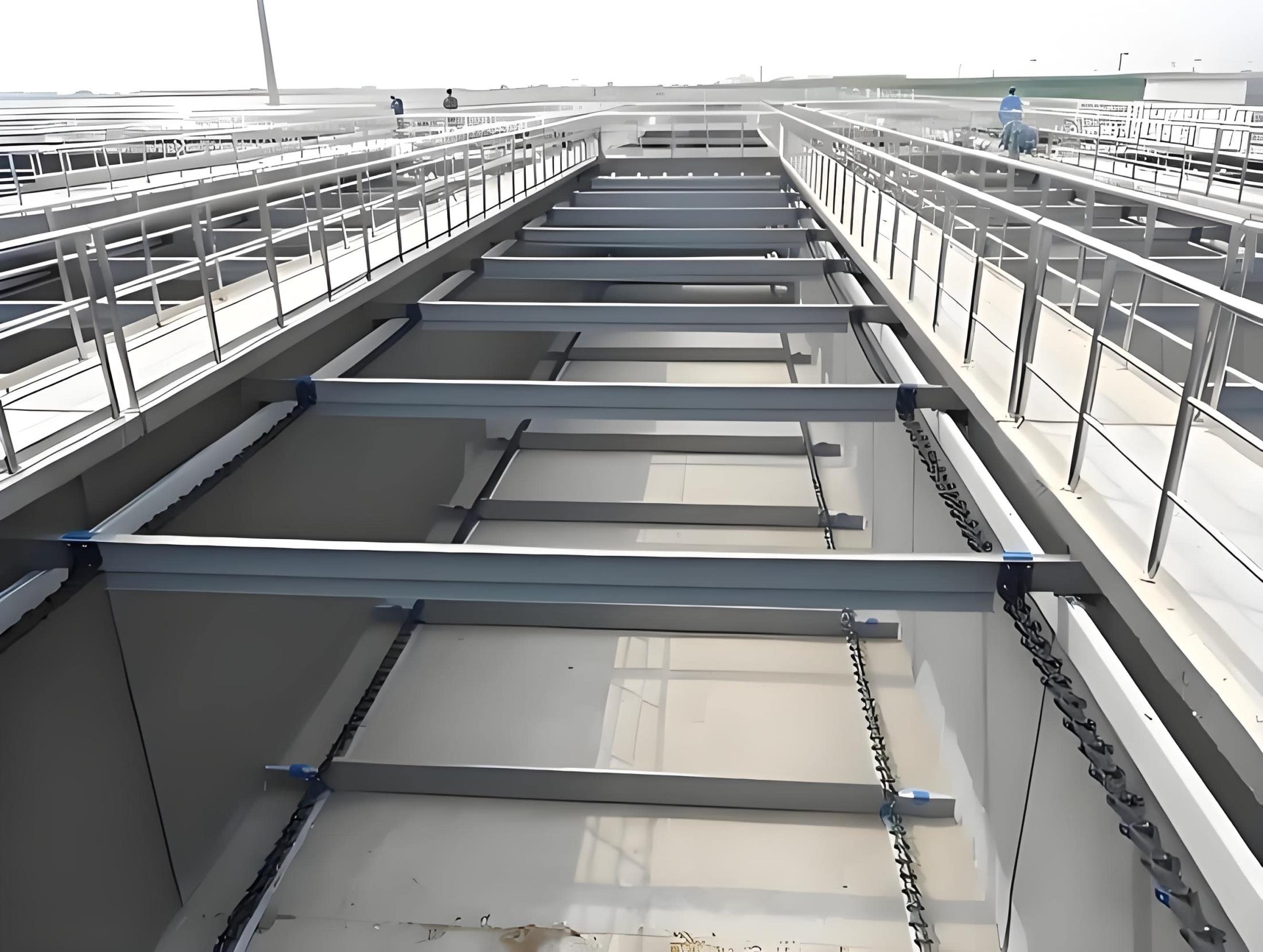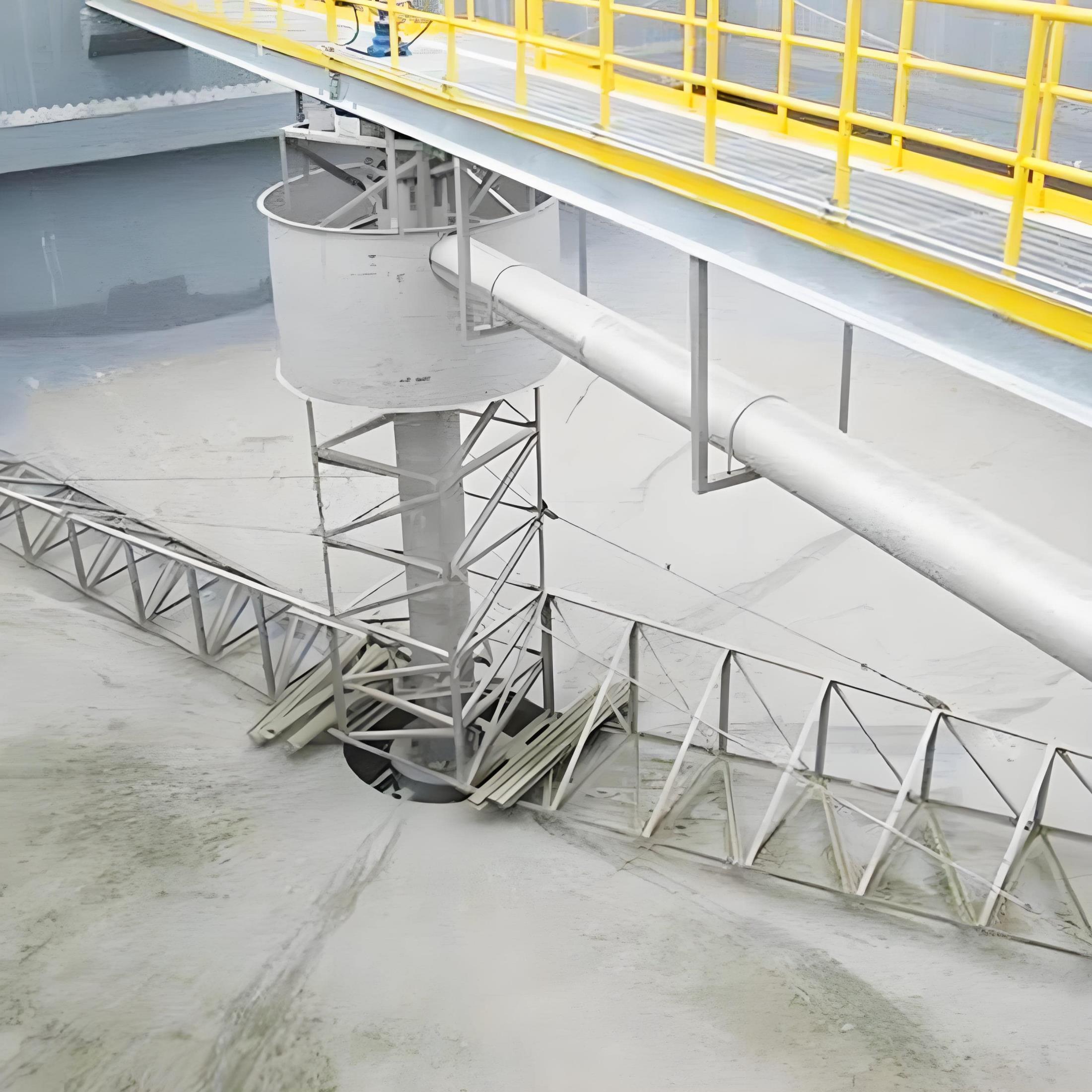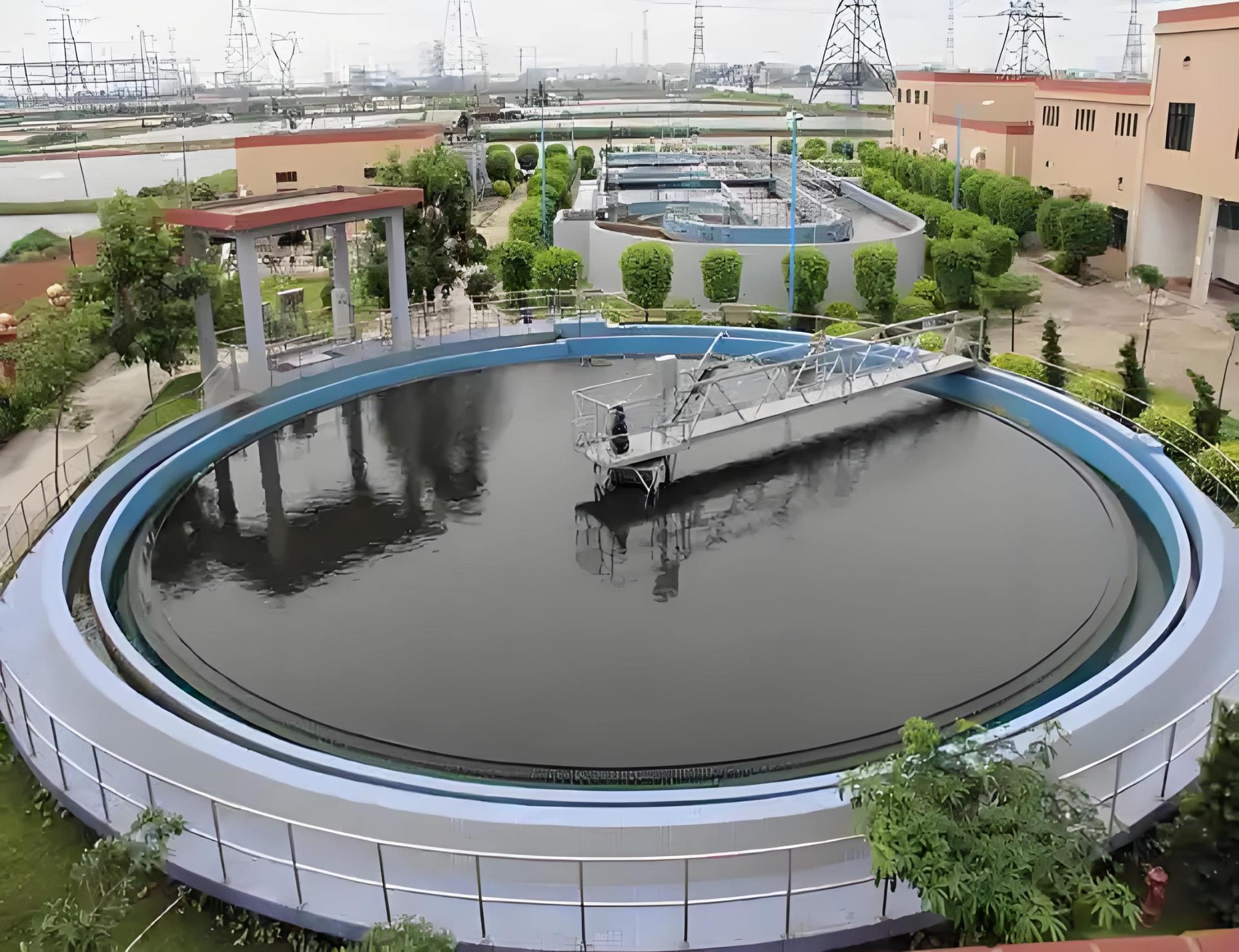A scraper is a mechanical device that scrapes sludge from a sedimentation tank to a designated collection point (or a sludge collection hopper at the inlet end of the sedimentation tank).
A scraper is a mechanical device that scrapes sludge from a sedimentation tank to a designated collection point (or a sludge collection hopper at the inlet end of the sedimentation tank). This ensures efficient sludge removal and prevents sludge accumulation. It also removes sediment from the tank bottom and skims scum from the surface, hence the name clarifier. In sewage treatment plants, scrapers are mostly used in primary sedimentation tanks. If used in gravity sludge thickening tanks, they are called thickeners.
Radial Flow Scraper: Suitable for radial flow sedimentation tanks, this type of scraper moves radially along the tank bottom.
Horizontal Flow Scraper: Suitable for horizontal flow sedimentation tanks, this type of scraper moves along the length of the tank.
Vertical Flow Scraper: Suitable for vertical flow sedimentation tanks, this type of scraper moves vertically along the tank wall.
Also, based on the direction of the tank, the first two types can be called rotary scrapers, while the latter type is called longitudinal scrapers.
Peripheral Drive Scraper: This type of scraper has a transmission mechanism located at the edge of the tank, with the scraper arm rotating via a drive shaft and connecting rod.
Center Drive Scraper: The transmission mechanism is located in the center of the tank, with the scraper rotating via a vertical shaft and scraper arm.
Truss Scraper: This scraper consists of a truss structure with wheels mounted on tracks, which are driven by scraper blades.
Trolley Scraper: The scraper is mounted on a trolley that travels across the tank surface, driving the scraper blades.
Chain Scraper: The scraper consists of a chain and scraper blades that slide along the tank bottom.
When selecting the appropriate scraper, consider the following factors:
Tank Shape and Size: The scraper type should match the tank geometry and size.
Sludge Characteristics: The scraper blade design should be tailored to the sludge density, settling characteristics, and abrasiveness.
Required Flow Pattern: The scraper configuration should optimize water flow within the tank for efficient sludge removal.
Maintenance Requirements: Consider ease of maintenance and the availability of spare parts.
In municipal wastewater treatment plants, sludge scrapers are primarily used to remove sludge from primary and secondary sedimentation tanks. Primary sedimentation tanks are used to remove larger suspended solids and sediment from wastewater, while secondary sedimentation tanks remove activated sludge and other fine particles generated during the biological treatment process.
In industrial wastewater treatment projects, sludge scrapers are used in various sedimentation tanks to remove various pollutants from industrial wastewater.
In groundwater treatment, sludge scrapers can remove contaminants such as iron, manganese ions, and hydrogen sulfide from groundwater.
Swimming Pool Sedimentation Tank Sludge Discharge
Aquaculture Wastewater Treatment Sludge Discharge
Food Processing Wastewater Treatment Sludge Discharge
Mining Wastewater Treatment Sludge Discharge
Efficient Sludge Removal: Efficiently collects and transports settled sludge for discharge, preventing sludge accumulation from impacting the treatment process and reducing treatment efficiency.
Improved Treatment Performance: Ensures stable and efficient sludge removal for optimal treatment results and compliance with stringent discharge standards.
Reduced Operating Costs: Minimizes sludge treatment costs and maintenance requirements by promoting efficient sludge removal and reducing the frequency of manual cleaning or maintenance interventions.
Improved Water Quality: Effectively removes settled solids, preventing them from re-integrating into treated water, resulting in cleaner wastewater discharge.




Copyright 2025 All Right Reserved. Hebei Fupeng Environmental Protection Technology Group Co., LTD